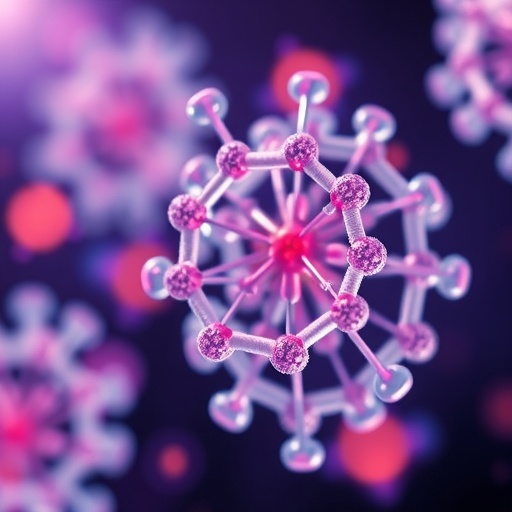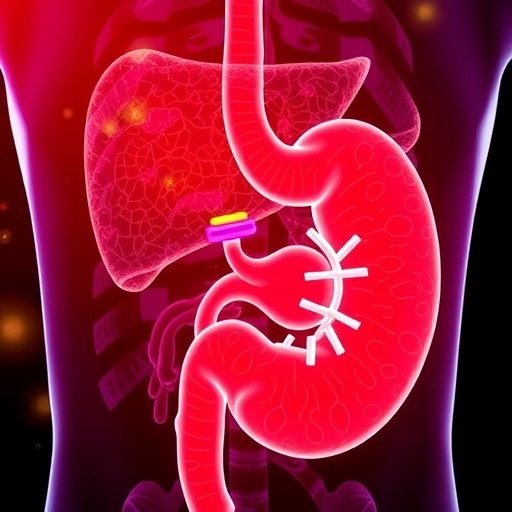In the relentless battle against cancer, researchers are turning to the cutting edge of nanotechnology to devise innovative strategies capable of overcoming the limitations of conventional therapies. Traditional methods such as chemotherapy and radiotherapy, despite their widespread application, remain hampered by systemic toxicity and the notorious evolution of drug resistance. In this context, nanoparticles—minute carriers ranging from 1 to 100 nanometers—offer an unprecedented avenue to improve specificity, reduce adverse effects, and enhance therapeutic efficacy in oncology.
Nanoparticles’ unique physicochemical characteristics enable them to penetrate biological barriers and preferentially accumulate in tumor tissues, leveraging either passive targeting via the Enhanced Permeability and Retention (EPR) effect or active targeting through surface modifications with ligands directed at overexpressed receptors on cancer cells. The complexity of their cellular internalization involves diverse endocytic mechanisms—including clathrin-mediated and caveolin-mediated pathways, as well as macropinocytosis—each influencing the efficiency of intracellular trafficking. Success hinges not only on cellular uptake but also on the nanoparticles’ ability to escape endosomal or lysosomal degradation, thereby preserving the integrity and potency of the delivered therapeutic cargo.
Among the array of nanocarriers developed for oncology applications, liposomes have secured a pioneering role as spherical phospholipid vesicles that enhance drug solubility and pharmacokinetic profiles. Meanwhile, solid lipid nanoparticles (SLNs) and their derivatives offer enhanced physical stability and controlled release kinetics. Polymeric nanoparticles, synthesized from either natural or synthetic polymers, afford remarkable adaptability in drug encapsulation and surface functionalization, enabling precise modulation of delivery parameters. Dendrimers, with their densely branched architecture, provide a multivalent platform for drug loading and surface ligand presentation. Inorganic nanoparticles—including silica, carbon-based nanostructures, and magnetically responsive iron oxide particles—introduce distinctive properties such as high surface area, conductivity, and responsiveness to external stimuli, rendering them versatile in multimodal therapeutic strategies. Notably, several liposomal and polymeric formulations have transcended laboratory research, achieving regulatory approval and clinical implementation.
A paradigm shift in oncological treatment is embodied by magnetic hyperthermia, a thermo-therapeutic modality utilizing magnetic nanoparticles such as iron oxide administered intratumorally. Upon exposure to alternating magnetic fields, these nanoparticles generate localized heat in the range of 42–46°C, selectively impairing malignant cells through mechanisms including protein denaturation, DNA fragmentation, and apoptosis induction, while sparing healthy tissues. Beyond direct cytotoxicity, magnetic hyperthermia exhibits synergistic potential by enhancing tumor susceptibility to chemo- and radiotherapies. Furthermore, magnetic nanoparticles can act as smart carriers co-loaded with chemotherapeutics, facilitating thermally triggered, site-specific drug release and amplifying therapeutic precision.
In a compelling intersection of natural and synthetic methodologies, viral nanoparticles (VNPs) and virus-like particles (VLPs) harness biological design for drug delivery. Originating from diverse viral sources such as plant, bacterial, or mammalian viruses, VNPs may contain genetic material, whereas VLPs represent non-infectious constructs devoid of viral genomes but retaining the sophisticated capsid architecture. This structural fidelity endows VLPs with inherent biocompatibility, precise spatial organization, and innate tropism for target cells. VLPs can be produced efficiently in scalable expression systems like yeast, and customized via functionalization with targeting ligands or encapsulation of drugs, genes, or contrast agents. Their proven clinical utility is underscored by the success of VLP-based vaccines against pathogens like HPV and Hepatitis B.
The fusion of these advanced platforms fuels unprecedented multifunctional nanosystems. For instance, VLPs can be engineered to encapsulate chemotherapeutic agents such as doxorubicin and decorated with targeting moieties like folic acid to preferentially home tumors. When combined with magnetic hyperthermia, localized heating triggers drug release from the thermosensitive VLPs, intensifying antitumor activity while minimizing off-target effects. Such integrative approaches exploit the complementary strengths of biological vectors and physical stimuli for enhanced therapeutic outcomes.
Overcoming the formidable challenge of brain tumors, especially glioblastoma, remains a critical frontier in cancer nanomedicine. The blood-brain barrier (BBB) effectively blocks the majority of systemic drugs, limiting therapeutic concentrations in the central nervous system. Intranasal delivery emerges as an innovative route, bypassing the BBB through the olfactory and trigeminal nerves, permitting direct transport of oncolytic viruses—replication-competent agents that selectively lyse cancer cells—and VLPs into brain tissue. This strategy holds promise for improving treatment of aggressive brain malignancies, circumventing invasive procedures and systemic toxicity.
Addressing inherent limitations of VLPs such as payload capacity and physical stability requires the development of hybrid nanosystems. For example, conjugation of VLPs to gold nanoparticles advances photothermal therapy, exploiting gold’s superior plasmonic properties to generate cytotoxic heat upon near-infrared light exposure. Coating magnetic nanoparticles with VLPs enhances dispersibility and targeting specificity, amalgamating the magnetic responsiveness with biological precision. Similarly, biomimetic silica nanocages templated from VLPs augment cellular uptake and biocompatibility, providing structural robustness and controlled release profiles. These synergistic assemblies embody the evolving sophistication of nano-delivery architectures.
Despite the promise and rapid progress, significant challenges remain on the path to clinical translation. Scaling up manufacturing while maintaining reproducibility and functional integrity is nontrivial, especially for complex hybrid nanostructures. Long-term toxicity and immunogenicity profiles require meticulous evaluation to ensure patient safety. Moreover, the heterogeneity of tumors and patient-specific factors necessitate adaptable design strategies and personalized treatment regimens. Focused research efforts must continue unraveling these barriers to actualize the full potential of these integrated nanotechnologies.
In conclusion, the convergence of synthetic nanoparticles, viral-like particles, and magnetic hyperthermia epitomizes a new era of precision oncology. These multimodal approaches offer the prospect of targeting tumors with unprecedented accuracy, enabling controlled therapeutic payload release and harnessing the immune system to potentiate antineoplastic responses. As research advances, these innovative nano-delivery platforms are poised to revolutionize cancer therapy, transforming difficult-to-treat malignancies into manageable or even curable conditions.
The integration of biological and physical nanotechnologies represents not merely incremental improvements but a quantum leap in therapeutic design. By merging the innate targeting capabilities and immune engagement of viral platforms with the controllable physicochemical stimuli of magnetic nanoparticles, clinicians may soon wield powerful, versatile tools against cancer. Unlocking this future hinges on addressing manufacturing challenges, understanding nano-bio interactions at the molecular level, and validating safety and efficacy in rigorous clinical trials. Success promises a transformative impact on global health, reducing cancer burden and elevating patient outcomes through smart, adaptable nanomedicine.
Subject of Research: Nanotechnology and nano-delivery systems for cancer treatment
Article Title: The Combination of Cutting-edge Strategies in Nano-delivery Systems to Overcome Drawbacks for Malignant Tumor Treatment
News Publication Date: 28-Aug-2025
Web References: http://dx.doi.org/10.14218/JERP.2025.00020
Image Credits: Janaina Fernandes
Keywords: Drug delivery, Nanocarriers, Virus-like particles, Magnetic hyperthermia, Cancer therapy, Nanomedicine, Targeted therapy
Tags: cellular internalization of nanoparticlesendocytic mechanisms in drug deliveryEnhanced Permeability and Retention effectimproving therapeutic efficacy in cancerliposomes in drug deliverynanocarriers for targeted therapynanoparticles in oncologynanotechnology in cancer treatmentovercoming drug resistance in cancerprecision drug delivery systemsreducing chemotherapy side effectstargeted cancer therapies





